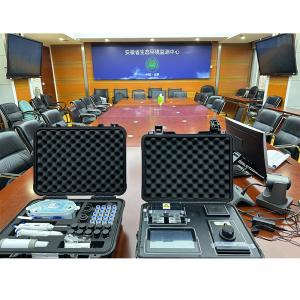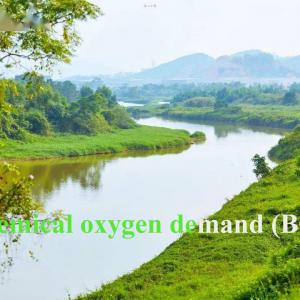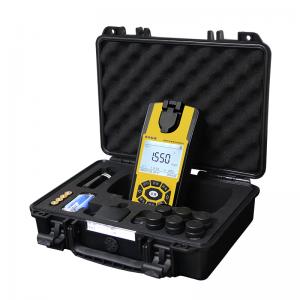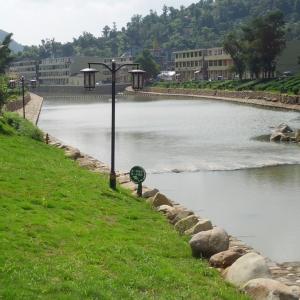Introduction to commonly used water quality testing technologies
The following is an introduction to the test methods:
1. Monitoring technology for inorganic pollutants
Water pollution investigation starts with Hg, Cd, cyanide, phenol, Cr6+, etc., and most of them are measured by spectrophotometry. As environmental protection work deepens and monitoring services continue to expand, the sensitivity and accuracy of spectrophotometric analysis methods cannot meet the requirements of environmental management. Therefore, various advanced and highly sensitive analytical instruments and methods have been rapidly developed.
1.Atomic absorption and atomic fluorescence methods
Flame atomic absorption, hydride atomic absorption, and graphite furnace atomic absorption have been developed successively, and can determine most trace and ultra-trace metal elements in water.
The atomic fluorescence instrument developed in my country can simultaneously measure compounds of eight elements, As, Sb, Bi, Ge, Sn, Se, Te, and Pb, in water. The analysis of these hydride-prone elements has high sensitivity and accuracy with low matrix interference.
2. Plasma emission spectroscopy (ICP-AES)
Plasma emission spectrometry has developed rapidly in recent years and has been used for the simultaneous determination of matrix components in clean water, metals and substrates in wastewater, and multiple elements in biological samples. Its sensitivity and accuracy are roughly equivalent to those of flame atomic absorption method, and it is highly efficient. One injection can measure 10 to 30 elements at the same time.
3. Plasma emission spectrometry mass spectrometry (ICP-MS)
The ICP-MS method is a mass spectrometry analysis method using ICP as the ionization source. Its sensitivity is 2 to 3 orders of magnitude higher than the ICP-AES method. Especially when measuring elements with a mass number above 100, its sensitivity is higher than the detection limit. Low. Japan has listed the ICP-MS method as a standard analysis method for the determination of Cr6+, Cu, Pb, and Cd in water.
4. Ion chromatography
Ion chromatography is a new technology for separating and measuring common anions and cations in water. The method has good selectivity and sensitivity. Multiple components can be measured simultaneously with one selection. The conductivity detector and anion separation column can be used to determine F-, Cl-, Br-, SO32-, SO42-, H2PO4-, NO3-; the cation separation column can be used to determine NH4+, K+, Na+, Ca2+, Mg2+, etc., using electrochemistry The detector can measure I-, S2-, CN- and certain organic compounds.
5. Spectrophotometry and flow injection analysis technology
The study of some highly sensitive and highly selective chromogenic reactions for the spectrophotometric determination of metal ions and non-metal ions still attracts attention. Spectrophotometry occupies a large proportion in routine monitoring. It is worth noting that combining these methods with flow injection technology can integrate many chemical operations such as distillation, extraction, adding various reagents, constant volume color development and measurement. It is an automatic laboratory analysis technology and is widely used in laboratories. It is widely used in online automatic monitoring systems for Water Quality. It has the advantages of less sampling, high precision, fast analysis speed, and saving reagents, etc., which can liberate operators from tedious physical labor, such as measuring NO3-, NO2-, NH4+, F-, CrO42-, Ca2+, etc. in Water Quality. Flow injection technology is available. The detector can not only use spectrophotometry, but also atomic absorption, ion selective electrodes, etc.
6. Valence and form analysis
Pollutants exist in different forms in the water environment, and their toxicity to aquatic ecosystems and humans is also very different. For example, Cr6+ is much more toxic than Cr3+, As3+ is more toxic than As5+, and HgCl2 is more toxic than HgS. The water quality standards and monitoring stipulate the determination of total mercury and alkyl mercury, hexavalent chromium and total chromium, Fe3+ and Fe2+, NH4+-N, NO2--N and NO3--N. Some projects also stipulate the filterable state. and total amount measurement, etc. In environmental research, in order to understand the pollution mechanism and migration and transformation rules, it is not only necessary to study and analyze the valence adsorption state and complex state of inorganic substances, but also to study their oxidation and reduction in the environmental medium (such as the nitrosation of nitrogen-containing compounds). , nitrification or denitrification, etc.) and biological methylation and other issues. Heavy metals that exist in organic form, such as alkyl lead, alkyl tin, etc., are currently receiving much attention from environmental scientists. In particular, after triphenyl tin, tributyl tin, etc. were listed as endocrine disruptors, the monitoring of organic heavy metals Analytical technology is developing rapidly.
2. Monitoring technology for organic pollutants
1. Monitoring of oxygen-consuming organic matter
There are many comprehensive indicators that reflect the pollution of water bodies by oxygen-consuming organic matter, such as permanganate index, CODCr, BOD5 (also including inorganic reducing substances such as sulfide, NH4+-N, NO2--N and NO3--N), total organic matter carbon (TOC), total oxygen consumption (TOD). These indicators are often used to control wastewater treatment effects and evaluate surface water quality. These indicators have a certain correlation with each other, but their physical meanings are different and it is difficult to replace each other. Because the composition of oxygen-consuming organic matter varies with water quality, this correlation is not fixed, but varies greatly. The monitoring technology for these indicators has matured, but people are still exploring analysis technologies that can be fast, simple, time-saving, and cost-effective. For example, rapid COD meter and microbial sensor rapid BOD meter are already in use.
2. Organic pollutant category monitoring technology
The monitoring of organic pollutants mostly starts from the monitoring of organic pollution categories. Because the equipment is simple, it is easy to do in general laboratories. On the other hand, if major problems are found in category monitoring, further identification and analysis of certain types of organic matter can be carried out. For example, when monitoring adsorbable halogenated hydrocarbons (AOX) and finding that AOX exceeds the standard, we can further use GC-ECD for further analysis to study which halogenated hydrocarbon compounds are polluting, how toxic they are, where the pollution comes from, etc. Organic pollutant category monitoring items include: volatile phenols, nitrobenzene, anilines, mineral oils, adsorbable hydrocarbons, etc. Standard analytical methods are available for these projects.
3. Analysis of organic pollutants
Organic pollutant analysis can be divided into VOCs, S-VOCs analysis and analysis of specific compounds. The stripping and trapping GC-MS method is used to measure volatile organic compounds (VOCs), and liquid-liquid extraction or micro-solid-phase extraction GC-MS is used to measure semi-volatile organic compounds (S-VOCs), which is a broad-spectrum analysis. Use gas chromatography to separate, use flame ionization detector (FID), electric capture detector (ECD), nitrogen phosphorus detector (NPD), photoionization detector (PID), etc. to determine various organic pollutants; use liquid phase Chromatography (HPLC), ultraviolet detector (UV) or fluorescence detector (RF) to determine polycyclic aromatic hydrocarbons, ketones, acid esters, phenols, etc.
4. Automatic monitoring and total emission monitoring technology
Environmental water quality automatic monitoring systems are mostly conventional monitoring items, such as water temperature, color, concentration, dissolved oxygen, pH, conductivity, permanganate index, CODCr, total nitrogen, total phosphorus, ammonia nitrogen, etc. Our country is establishing automatic water quality monitoring systems in some important nationally controlled water quality sections and publishing weekly water quality reports in the media, which is of great significance to promoting water quality protection.
During the "Ninth Five-Year Plan" and "Tenth Five-Year Plan" periods, my country will control and reduce the total emissions of CODCr, mineral oil, cyanide, mercury, cadmium, arsenic, chromium (VI), and lead, and may need to pass several five-year plans. Only by making great efforts to reduce the total discharge below the water environment capacity can we fundamentally improve the water environment and bring it to a good state. Therefore, large-polluting enterprises are required to establish standardized sewage outlets and sewage measurement flow channels, install sewage flow meters and online continuous monitoring instruments such as CODCr, ammonia, mineral oil, and pH to achieve real-time monitoring of enterprise sewage flow and pollutant concentration. and verify the total amount of pollutants discharged.
5 Rapid monitoring of water pollution emergencies
Thousands of large and small pollution accidents occur every year, which not only damages the environment and ecosystem, but also directly threatens people's life and property safety and social stability (as mentioned above). The methods for emergency detection of pollution accidents include:
①Portable rapid instrument method: such as dissolved oxygen, pH meter, portable gas chromatograph, portable FTIR meter, etc.
② Rapid detection tube and detection paper method: such as H2S detection tube (test paper), CODCr rapid detection tube, heavy metal detection tube, etc.
③On-site sampling-laboratory analysis, etc.




